Cauleen Smith on ‘Drylongso’
In your Amos Vogel lecture at the 2022 New York Film Festival, you discussed his idea of cinema as both a medium of subversion and one of wonder and magic. Considering that wonder and magic are often associated with audience manipulation, how do you find a balance in your work between inciting wonder and magic and retaining the sort of criticality that’s associated with subversive cinema?
I’ve accepted that the power of cinema is the power of manipulation – the power to sway, convince, seduce, even subvert. Ethics is what I’m interested in. The plasticity of cinema: What can you do with it? What kind of politics, spirit, consciousness, culture are you deploying?
I’ve always felt a weird alienation from both mainstream cinema and ‘subversive’ cinema because I never really felt like either was particularly invested in social justice and liberation. The idea of a structural film – that it’s revealing the tactics of its own production and structure – I’ve always loved that, but as a way to take apart manipulative and seductive ideas that reinforce things I disagree with or understand as socially destructive. Amos Vogel may be saying the same thing but with a different idea as to what that looks like.
You’ve stated that when you first read Vogel you weren’t interested in the European and Soviet films he championed. What were the films that influenced you as a young filmmaker leading up to the production of Drylongso ?
Soviet cinema is funny because, like any other baby filmmaker, I was completely enthralled with Dziga Vertov – and not just The Man with the Movie Camera but also Three Songs about Lenin. But I also – and you don’t really see this in Drylongso – loved Flaming Creatures by Jack Smith, the films James Broughton shot in California, Maya Deren’s work … And then I went to San Francisco State. I studied with Trinh T. Minh-ha and watched her films. Her vision came out of anthropology and a very particular idea about the relationship between the camera and the subject that got drilled into me. For Drylongso, I had to rely on close-cropped shots because I didn’t have the resources and means to control vast areas of space. That was hard for me because space is the context for everything – I wanted Oakland to always be the film’s backdrop. And that definitely came from learning from her.
In terms of commercial cinema, just the idea that anybody could make a film came from Spike Lee. Then all of these guys who came a little bit afterward, like [Robert] Rodriguez and [Richard] Linklater. They really influenced me to take the leap – I thought, ‘Oh, if someone can make a feature film for $7,500, then I should be able to do that too.’
You’ve spoken about using location shooting to foster participation with communities instead of continuing the legacies of colonisation of space and extraction of resources that often attend location shooting. How did you foster communal participation when filming Drylongso ?
You know, I wish I could say it was conscious and deliberate, but it wasn’t – it was something that I learned over the 22 days that we shot the film in Oakland. We learned, ‘Oh my gosh, this neighbourhood is going to help us get our film made.’ The people there were interested, they were curious, and the kids there didn’t have anything to do, so they showed up to watch us every day. And I was fortunate to have an amazing crew that was willing to be porous with the neighbourhood.
This wasn’t conscious, deliberate, methodical – this wasn’t something I was doing as a political gesture. We just found ourselves doing it, and it was fun. It was a lot more fun than telling these kids to go away. It was a lot more fun for my gaffer, Kurt [Nagle-Taylor], to train some teenage kids to be grips. There was apprenticing going on; there were young girls helping with the makeup. It was how my crew wanted to relate to legendary West Oakland – this was the neighbourhood where the Black Panthers would meet. It’s a very proud, venerable Black community, and its people were proud that someone was filming there.
After Drylongso , what were the circumstances behind your shift to short films and installation art?
I spent five years after Drylongso in the film industry, shadowing TV shows, writing screenplays for other people, ghostwriting, adapting books. I had an agent and all that stuff, but I just wasn’t getting any work. Things were getting pretty hand-to-mouth, so I took a teaching job, because I had to live, and I was also getting tired of producers telling me, ‘Write this screenplay on spec’ or ‘How dare you ask for ten thousand dollars to write this screenplay?’ And they were asking me to write screenplays for movies that were never going to be made anyway!
When I started teaching at UT Austin, there were a lot of pipe-dream pretensions concerning what’s possible in relation to Hollywood. My colleagues were talking about how they were going to build a studio, and I was like, ‘You guys don’t understand – that isn’t going to work.’ I was trying to tell them how agents think, how studios think, but nobody was listening. And I got so bored with my film colleagues that I started hanging out with artists in the art department. It was an incredibly refreshing change. They had many different ways of talking about what they made, as well as many different venues through which they could show their work. I noticed they could show their work at festivals but also display them as installations. And they never had to ask permission to do anything! They didn’t have to pitch ideas, they didn’t have to deal with people who had been nepotistically installed in high-level positions within studios. These artists had created a far more stimulating environment. And once they vouched for my work and started showing it and telling others about it, I found myself making my own installations.
I also found that avenue an interesting way of deconstructing filmmaking. Because filmmaking requires that you master arsenals in every medium, from textiles to sound. You have to know how to do all that stuff, but it also all becomes consolidated on the screen. In commercial cinema, everything is subservient to the narrative. With installation work, you can deconstruct that by deploying different artistic elements so that they have their own autonomy.
What do you see when you watch or think about Drylongso now, more than 25 years after you directed it?
The thing I realised during my most recent rewatch is that it’s very much a film of its time. It’s very much a nineties movie, like a time capsule – the way people are dressed, the way they talk. So much of it was reflective of early hip-hop culture, Bay Area and radical Black politics, things that very much came out of a specific time and place. I also didn’t realise as I was making the film that I would become like Pica – making installations, making work that would be on public display.
You wrote your own future, in a sense.
I know – it’s really wild to think of that now.
Interview by Michael Joshua Rowin, Janus Films press notes
Drylongso
Director: Cauleen Smith
Production Company: Nation Sack Filmwork
Executive Producer: Cauleen Smith
Producer: Salim Akil
Associate Producer: Christine Gant
Production Manager: Stacey Marbrey
Casting: Monica R. Cooper
Screenplay: Cauleen Smith, Salim Akil
Director of Photography: Andrew Black
1st Assistant Camera: Robert Hubbard
2nd Assistant Camera: Alan Gravlee, Jason Wolos
Gaffer: Kurt Nagle-Taylor
Key Grip: Monroe Cummings
Editor: Cauleen Smith
Production Designers: Gabrielle Stover, Richard Bracho
Costume Designer: Rulette Mapp
Music: Curt Harpel, Pat Thomi
Sound Designer: Kerry Carmean
Cast
Toby Smith (Pica Sullivan)
April Barnett (Tobi)
Will Power (Malik)
Channel Schafer (Gloria Sullivan)
Salim Akil (Mr Yamada)
Keith Williams (Mohamed)
Stacey Marbey (Meagan)
Earl Ford (Tide)
Keilan Matthews (Tyson)
Patrick Pulliam (Kev)
Timothy Braggs (Jefferson)
USA 1998
86 mins
Digital 4K (restoration)
SIGHT AND SOUND
Never miss an issue with Sight and Sound, the BFI’s internationally renowned film magazine. Subscribe from just £25*
*Price based on a 6-month print subscription (UK only). More info: sightandsoundsubs.bfi.org.uk

BFI SOUTHBANK
Welcome to the home of great film and TV, with three cinemas and a studio, a world-class library, regular exhibitions and a pioneering Mediatheque with 1000s of free titles for you to explore. Browse special-edition merchandise in the BFI Shop.We're also pleased to offer you a unique new space, the BFI Riverfront – with unrivalled riverside views of Waterloo Bridge and beyond, a delicious seasonal menu, plus a stylish balcony bar for cocktails or special events. Come and enjoy a pre-cinema dinner or a drink on the balcony as the sun goes down.
BECOME A BFI MEMBER
Enjoy a great package of film benefits including priority booking at BFI Southbank and BFI Festivals. Join today at bfi.org.uk/join
BFI PLAYER
We are always open online on BFI Player where you can watch the best new, cult & classic cinema on demand. Showcasing hand-picked landmark British and independent titles, films are available to watch in three distinct ways: Subscription, Rentals & Free to view.
See something different today on player.bfi.org.uk
Join the BFI mailing list for regular programme updates. Not yet registered? Create a new account at www.bfi.org.uk/signup
Programme notes and credits compiled by Sight and Sound and the BFI Documentation Unit
Notes may be edited or abridged
Questions/comments? Contact the Programme Notes team by email

